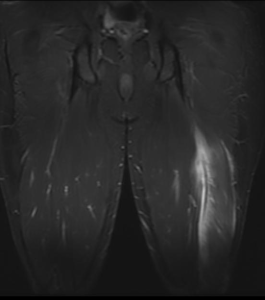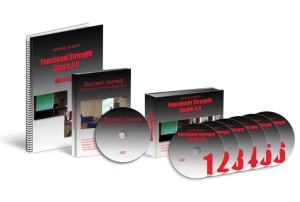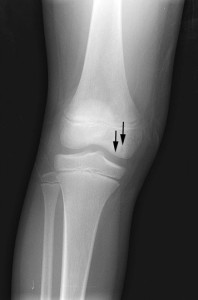Many sports physiotherapists rehabilitate hamstring injuries on a daily basis. Unfortunately, they can be very tricky to fully and definitively rehabilitate fully and reported re-injury rates are as high as 50%. This statistic inevitably leads to the people screaming it is due to inadequate rehabilitation techniques, which may be correct. Accordingly, this article will discuss new research which compares the clinical and morphological effects of 2 effective rehabilitation programs for hamstring injuries.
In This Episode In this episode of the podcast I continue the interview with Paul Wright. In Part 2, of the interview we discuss: The 4 most successful and easy to implement external marketing strategies How to overcome barriers to implementing these successful strategies 5 of Paul’s business failures and what he learnt from them Why […]
 TSP011: Health Business Success with Paul Wright (Part 2) [ 28:45 ] Play Now | Play in Popup | Download
TSP011: Health Business Success with Paul Wright (Part 2) [ 28:45 ] Play Now | Play in Popup | DownloadIn this episode of the podcast I interview Paul Wright. Paul Wright is a physiotherapist and business consultant. He graduated from his first degree, as a Physical Education teacher, in 1987 and then graduated as a physiotherapist in 1990. He has also completed an Advanced Diploma in Business Management. Paul has opened multiple multi-disciplinary health clinic and has been actively involved in clinical education around the world having lectured to over 20,000 health professionals…
 TSP010: Health Business Success with Paul Wright (Part 1) [ 45:04 ] Play Now | Play in Popup | Download
TSP010: Health Business Success with Paul Wright (Part 1) [ 45:04 ] Play Now | Play in Popup | Download
You know what I’ve learned after talking to incredible sports physiotherapists and sports medicine professionals, attending numerous professional development courses, conferences and seminars and reading many books: there is so much that I don’t know. And I say that without reservation, as I know that it is impossible to stay at the forefront of current practice and research in all fields of sports medicine. There is just not enough hours in the day. Fortunately, I also know not to pass up opportunities to learn from experts in a given field. Thus, I would like to introduce you to Michael Boyle.
Something A Little Different: So, I have decided to do something a little bit different. I have invested some time into creating some videos for YouTube based on various diagnoses and pathologies that have been previously discussed on this site. I have done this for a few reasons, including to allow the blog/site to reach a greater audience, to assist or cater for those who prefer to watch or listen to information rather than read lengthy articles and also to allow physiotherapists and physical therapists to refer patients/athletes to the videos as a source of information, which can be consumed in their own time….
Can we get better results? The answer is yes. I am certain that following many physiotherapy or physical therapy treatments there is something else that could have been done or said that would allow the patient to get better results. Unfortunately, most physiotherapists do not have all day to spend with one patient, and are thus limited in what they can do. We just want to hope that we can efficiently deliver the best possible treatment or intervention in any given environment. This is why prioritising treatments and using Pareto’s Law can be quite important.
Groin pain is a common complaint in sports involving running, kicking and explosive changes of direction, and as such is frequently encountered by the sports physiotherapist. In soccer, groin and lower abdominal pain accounts for 10-13% of injuries per year. However, due to the number of potential differential diagnoses for athletes with chronic pain in the groin and lower abdominal region only a small proportion of athletes are eventually diagnosed with athletic pubalgia (sports hernias). Athletic pubalgia is a poorly understood disease process and it is imperative that athletes with the condition are managed appropriately as the symptoms can eventually limit the athlete’s participation in training and playing.
One of the best things we can do for our patients is communicate with them well. Look at your day in the clinic: it’s talk, talk, talk! It is important that we talk well, as great communication is vital to becoming a great therapist. This is well covered ground on this site, as we have discussed the power of a great analogy and the role of communication in improving patient compliance. This article will discuss another valuable tool you have in your ‘Communicate Like A Champ’ toolbox… storytelling.
In the sports physiotherapy world we are frequently called upon to assess and treat athletes of all ages. As you might expect, this may range from young children through to nonagenarian Master’s athletes. Sports physiotherapists would know when dealing with young athletes missing a career-ending (yes, career) diagnosis can be unforgivable. One such diagnosis is juvenile osteochondritis dissecans of the knee, a condition that commonly affects athletic children, and one that if left unchecked could jeopardise the integrity of their knee. Thus, accurate and timely diagnosis followed by appropriate management is essential when dealing with juvenile osteochondritis dissecans…..
Let me ask you a question; do you work in a successful sports physiotherapy practice? If you said yes, firstly congratulations, I’m glad to hear that! My follow-up question is why is your practice so successful? What are the reasons or factors that make your sports physiotherapy practice a highly successful one?
In the past this site has featured some lighter, colloquial blog posts. These articles discuss issues related to the greater physiotherapy community. Thus, I present a few mantras I have heard, adapted or made up for the physios to live by in the coming year.
Radial tunnel syndrome is rare, it is challenging to differentially diagnose and can be a monster to manage. If you have a recalcitrant case of tennis elbow then this post will interest you! This article discusses the best available evidence for assessment and management of radial tunnel syndrome.








